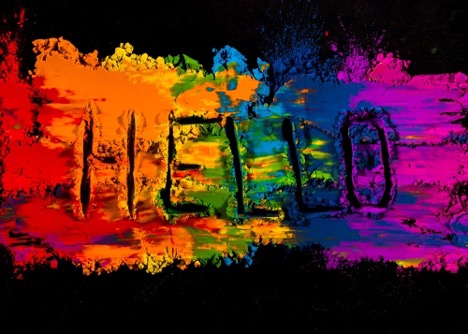Advertising is a form of communication that popularizes an idea, product, or service, making it known to the general public. This includes the use of various media, including print, television, radio, online, and outdoor advertising, to reach potential customers. The primary goal of advertising is to persuade consumers to purchase or try the product or service presented in the advertisement.
Effective advertising must be well-designed and tailored to the specific audience it is trying to reach. It should capture the viewer’s attention, convey its message clearly and concisely, and prompt the viewer to take action, such as purchasing the product or visiting a website.
There are several key elements that contribute to successful advertising:
- Clear message: The advertisement should clearly communicate what the product or service offers and why the consumer should buy it. The message should be brief and memorable.
- Attractive design: The design of the advertisement should be visually appealing and grab the viewer’s attention. This may include the use of high-quality images, vibrant colors, and creative layouts.
- Target audience: The advertisement should be targeted to a specific audience based on factors such as age, gender, interests, and location. By understanding their potential customers, advertisers can create messages that resonate with them.
- Call to action: The advertisement should include a clear call to action, such as “Buy Now,” “Subscribe Here,” or “Call Us Today.” This gives the viewer something specific to do after seeing the advertisement.
- Consistency: All advertising efforts should be consistent across all channels and platforms. This helps to build a strong brand and recognition among consumers.
By taking into account these elements and using the psychology of advertising to influence the emotions and behaviours of consumers, marketers can create effective advertising campaigns that achieve their business goals.
1. Psychology of Advertising
The psychology of advertising is the study of how colours, fonts, images, and other visual elements influence the behaviour and decisions of consumers. This field focuses on understanding the emotional and cognitive responses of people to various aspects of advertising, ultimately aiming to improve the effectiveness of marketing campaigns.
– Colours:
In advertising, the psychology of colors plays a crucial role in influencing the emotions and decisions of consumers. The choice of colour in an advertisement can significantly impact how the audience perceives the product or service, making the importance of colours extremely significant. Different colours are associated with different emotions and associations. For example:
- Red: Often associated with passion, urgency, and excitement. It can be used to attract attention and stimulate impulsive purchases.
- Blue: Typically symbolises trust, reliability, and professionalism. It is often used by financial institutions and technology companies.
- Yellow: Associated with happiness, optimism, and warning. It can be effective in grabbing attention, but excessive use can be distracting.
- Green: Linked to nature, health, and eco-friendliness. It is often used by brands wanting to communicate their sustainability or organic origin.
– Fonts:
Typography plays a crucial role in the layout and readability of advertising materials. Different fonts can convey different moods and tones:
- Serif fonts (like Times New Roman): They are often associated with tradition, authority, and elegance. They can be suitable for luxury or conservative brands.
- Sans-serif fonts (like Helvetica): These fonts typically look modern, simple, and clean. They can be effective for communication materials that require clarity and brevity.
- Script fonts (like Brush Script): These fonts can evoke feelings of friendliness, warmth, and individuality. However, they should be used sparingly as they can easily appear too intrusive or pretentious.
– Images:
Images in advertisements can instantly convey a message and evoke strong emotional reactions from viewers. Some common strategies include:
- Use of faces: Including people in advertisements can help viewers connect with the product or service on a personal level. Faces can also signal social acceptance of a product.
- Lifestyle benefits: Showing happy, successful, or adventurous users can inspire viewers to desire similar results.
- Emotional resonance: By using images that evoke strong emotions (e.g., joy, sadness, surprise), advertisers can create a lasting impression on viewers.
The psychology of advertising underscores the importance of visual elements in shaping consumer perceptions and behaviour. By carefully selecting colors, typography, and images, marketers can create advertising campaigns that resonate with their target audience and encourage desired actions.
Examples of how colors, fonts, and images can influence users:
- An advertisement for a red car may use the color red to evoke excitement and passion.
- An advertisement for a bank may use the color blue to convey a sense of trust and security.
- An advertisement for a children’s toy may use a playful font and colourful images to attract the attention of children.
Understanding the psychology of advertising can help you create more effective advertisements that will capture the attention of users and encourage them to take action.
2. Advertising on Facebook
In the context of advertising on Facebook, the influence of visual and textual elements on users’ emotions and decisions is crucial for achieving successful marketing campaigns.
Here are some key aspects to consider for advertising on Facebook:
Visual Elements
- Images: Using high-quality and attractive images is a key factor in capturing the attention of users. Images that are relevant to the product or service, as well as to the target audience, are more likely to generate interest and clicks.
- Video: Videos are becoming increasingly popular on Facebook and can be very effective in engaging users and conveying the brand’s message. Short, dynamic, and interesting videos are more likely to be watched to completion and leave a lasting impression.
- Colours: The colours used in the advertisement can influence the emotions and reactions of users. For example, warm colours like red and orange can evoke a sense of excitement and energy, while cool colours like blue and green can be associated with calmness and trust.
Textual Elements
- Headline: The headline is the first thing users see when encountering a Facebook advertisement. It should be concise, clear, and engaging to capture their attention and encourage them to read more.
- Text: The text of the advertisement should be well-written, informative, and persuasive. It should clearly describe the product or service and the benefits it offers to users.
- Call to action: The call to action is a key element that tells users what you want them to do. It should be clear, concise, and easy to follow.
Combination of Visual and Textual Elements
To achieve maximum impact, it’s important for the visual and textual elements in the advertisement to complement each other. The images and videos should be selected to reinforce the message of the text, while the text should be written to describe and complement the visual elements.
Additional tips
- Personalisation: Personalise your advertisements to reach your target audience. Use targeting and segmentation to show your ads to people who are most likely to be interested in your product or service.
- Testing: Don’t be afraid to test different visual and textual elements to see what works best. Use A/B testing to compare different versions of your ad and see which one is most effective.
- Tracking results: Track the results of your ads to see how they perform. Use Facebook Analytics to see which content generates the most engagement and clicks.
Understanding how different visual and textual elements can influence users’ emotions and decisions is crucial for creating successful ads on Facebook.
By carefully selecting images, videos, text, and calls to action, you can create ads that engage your target audience and encourage them to take action.
3. Advertising on Google
Advertising on Google, especially through the Google Ads platform, also heavily relies on visual and textual elements to influence users’ emotions and purchasing decisions. Although Google is typically associated with text ads, it also offers opportunities to incorporate visual elements in advertising campaigns, such as the Google Display Network.
Here’s how these elements can influence advertising on Google:
- Headlines and descriptions: In the textual elements of Google ads, such as headlines and descriptions, elements can be included to attract the attention of users and persuade them to click on the ad. For example, using promotional offers or catchy headlines can grab users’ attention and prompt them to take action.
- Visual elements: If the ad includes visual elements, they can also significantly impact users’ emotions. For instance, including a picture or video demonstrating the product or service in action can create a stronger impression and support users’ decision to engage or purchase the product.
- Keywords and relevance: The textual elements in Google ads can incorporate keywords that are relevant to users and their needs. When the ad aligns with users’ search queries and offers a solution to their problems or desires, it has a greater chance of capturing their interest and convincing them to click.
- Trust and authority: Including elements that enhance the trust and authority of the brand or product can also influence users’ purchasing decisions. This can include customer reviews, quality certifications, or reputable partnerships.
Combining textual and visual elements in Google ads can create a powerful combination that captures users’ attention, convinces them to explore the offer, and take action, such as visiting a website or making a purchase.
4. Digital advertising
Digital advertising, also known as online advertising, is a form of marketing that utilises the internet to deliver promotional messages to the target audience. This includes using various online channels such as search engines, social media platforms, websites, email, and mobile applications to promote ideas, products, or services. The primary goal of digital advertising is to generate interest, engagement, and actions such as conversions, registrations, or sales.
There are several key types of digital advertising:
- Search advertising: Advertising on search engines, such as Google Ads, involves placing ads alongside users’ search results when they are searching for specific keywords related to your products or services. This type of advertising can be highly effective as it reaches users actively seeking information or solutions related to your business.
- Social media advertising: Social media advertising involves creating and sharing sponsored content on platforms such as Facebook, Instagram, LinkedIn, Twitter, and TikTok. This type of advertising allows businesses to engage with their target audience in a more personal and interactive way, fostering relationships and brand loyalty.
- Display advertising: Display advertising involves placing graphical ads, such as banners and videos, on websites and mobile applications. This type of advertising allows businesses to reach a wide audience and showcase their products or services within the context of relevant content.
- Email marketing: Email marketing involves sending promotional messages, offers, or news to a list of subscribers. This type of advertising allows businesses to maintain a connection with their existing customers and encourage them to make repeat purchases or explore new products.
- Content marketing: Content marketing involves creating and sharing valuable, relevant, and engaging content such as blogs, infographics, videos, and podcasts to attract and retain an audience. This type of advertising can help businesses establish authority and trust in the industry while also promoting their products or services in a subtle and non-intrusive manner.
For digital advertising to be effective, it needs to be well-planned, targeted, and measured. This includes defining the target audience, setting clear objectives, choosing appropriate channels and formats, creating compelling content, and tracking results to understand their effectiveness.
By using these strategies, marketers can develop comprehensive digital marketing campaigns that engage their audience, stimulate desired behavior, and achieve business goals.
In the context of digital advertising, the influence of visual and textual elements on the emotions and decisions of consumers is crucial for achieving successful marketing campaigns.
To achieve maximum effect, it is important for the visual and textual elements in advertising to complement each other. Images and videos should be selected to reinforce the message of the text, while the text should be written to describe and complement the visual elements.
Understanding the impact of visual and textual elements on the emotions and decisions of consumers is essential for creating successful advertising campaigns. Careful selection of images, videos, text, and calls to action, as well as the use of targeting, ad extensions, conversion tracking, and A/B testing, will lead to engaging the target audience and encouraging action.





